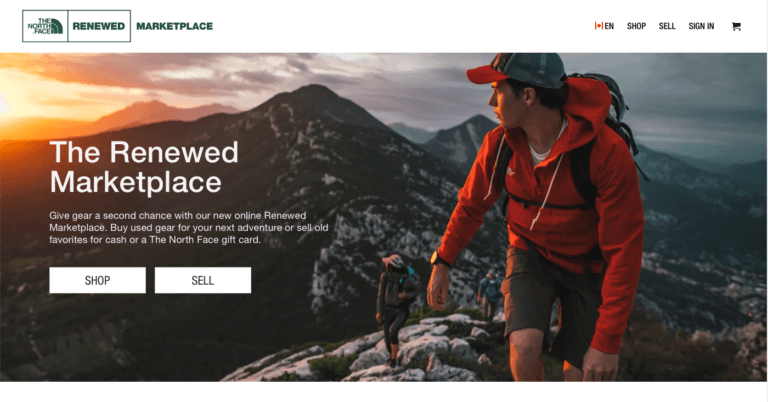Buying a cheap knock-off used to be a dirty little secret, like when Samantha from Sex and the City is horrified to discover her designer handbag is a fake. Today, buying a cheap version of the real thing is not just ok, it can even be brag-worthy. Welcome to the world of “dupes,” the sneaky cousin to counterfeits.
In the case of counterfeits, brands have straightforward legal recourse. However, “dupes” are products that are a close match for an original but are not always legally counterfeit. They intentionally mimic a specific brand product in appearance, branding, and package design. And with wider-spread social acceptance and constant promotion on social media, dupes have become hard to fight.
WHY ARE DUPES POPULAR?
In the past, luxury products were consumed by a niche audience. Exposure to high-end brands was limited to the occasional billboard or magazine ad. Today, the average consumer sees 6000 to 10000 ads every day, many of which promote luxury goods.
In addition, influencers have created a hunger for a life that looks “insta-worthy.” Add to that the rising cost of living, and you have a perfect storm where dupes fill a powerful emotional need for the consumer: an affordable version of the life they are told repeatedly, all day long, they should be living.

Image Source: Shutterstock
WHAT’S THE PROBLEM WITH DUPES?
You could argue giving consumers a version they can afford of a high-end product isn’t a terrible thing, and some even go so far as to use terms like “democratization” to state the case for dupes. The problems for brands are obvious, but there are also issues for consumers, some they may not even be aware of.
PROBLEMS FOR THE CONSUMER
- Quality concerns. Claims for equal quality to branded originals can be alluring, especially when delivered by influencers who swear it’s as good as the real thing. However, there is little oversight into messaging especially on social media, making it possible to make blatantly false claims with no repercussions.
- Safety concerns. Depending on where a dupe is coming from, there can be health safety concerns. They may have undergone little to no product quality testing and may skirt regulations by coming from overseas. Dupe beauty products have reportedly been found to include dangerous ingredients such as E.coli and even clothing dupes have been found to include chemicals unsuitable for contact with skin. This is not true of all dupes, but the onus is on the consumer to figure out which products may be risky.
- Sustainability concerns. Due to their lower cost, consumers may be encouraged to buy more items and toss those they don’t like after a few uses. Production of trend-based products, such as fast fashion, is typically inefficient and wasteful, with a large number of products never even being sold and going directly to landfill.
- Ethical concerns. The counterfeiting industry has been connected to organized crime for decades, funding terrorism and human trafficking. Even brands that are not run by criminal organizations rarely pay workers a living wage – 93% of fast fashion brands reviewed by Fashion Checker do not.
Are these issues salient enough to overcome the power of influencers talking up imitations? Probably not. Customers don’t believe most brands are ethical and sustainable, and dupes are cheap enough that they are willing to take a risk on quality and safety. At $20 if you throw it away, it’s not a huge loss.
WHAT CAN BRANDS DO ABOUT IT? 6 STRATEGIES
When legal action isn’t available or is insufficient, a strategic approach is warranted.
Here are 6 strategies to consider:
- TIERED PRICING & PARTNERSHIPS
Offering a lower-priced product under your brand banner allows consumers to get the real thing at a price that is palatable for them. Roberto Cavalli’s Just Cavalli line is sold at an accessible price point that allows badge value. Partnerships, such as Marni’s partnership with Uniqlo or the Jillian Harris collaboration with Canvas for Canadian Tire, have the same effect. Both tiered sub-brands and partnerships allow consumers to participate in a brand’s aesthetic and allow brands to start building a relationship with the consumer.

Image Source: SLD
2. CREATE AND SHOWCASE A MORE ETHICAL PRODUCT LIFECYCLE
Consumers permit themselves to buy dupes knowing they are unsustainable and unethical because they are not substantially different from the brands they are ripping off. Is Zara or even Gucci more sustainable and ethical than Shein? Consumers don’t think so.
Ethical and sustainable material production can be a strong differentiator that gives consumers a reason to pay more. Sustainable fashion brands like Christy Dawn do an excellent job featuring how their garments are made, by whom, and the environmental impact of their products.

Image Source: Christy Dawn
3. TRADE-INS
Lululemon recently offered consumers the opportunity to swap their knock-offs for real Lululemon yoga pants – for free! This smart move allowed them to connect with consumers who have a desire for their product but may not fully appreciate the value. By showing them how much better real Lulus are, they created a buzzy activation that got a lot of attention and demonstrated total confidence in the quality of their product.
4. INVEST IN AI
Deloitte’s Dupe Killer is an artificial intelligence platform that searches the internet for dupes based on visual cues and makes recommendations on which to legally pursue based on the degree of similarity. Platforms like this may help eliminate some of the more brazen actors cost-effectively.
5. EMPOWER RESALE
Younger consumers often factor in resale value when they purchase an item. If you have an integrated resale platform that makes it easier for them to evaluate this return and resell their item later on, this leverages their current behavior to build a relationship with your brand. It also allows consumers who covet your brand to buy your product at a lower price. The North Face’s “Renewed Marketplace” is a great example of how to do this well.

Image Source: The North Face
6. DEEPEN THE RELATIONSHIP WITH YOUR CONSUMER
The speed of change in today’s market is dizzying. Trends change overnight, especially with Gen Z consumers, for whom a trend can peak and end within months or even weeks. One of the things dupes cannot do, however, is create a meaningful omnichannel relationship with the consumer. They don’t have the resources and it wouldn’t fit with their strategy.
Brands need to go deep with their consumer, using tools such as loyalty programs, experiential activations, customer segmentation studies, and personalization to create an emotional connection that goes beyond the product.
THE BOTTOM LINE
With the economic reality and social pressure Gen Z is facing, is there any confusion about why dupes are taking off like wildfire? Brands point the finger at social media platforms for not better policing content (expecting social media to solve any problem is a fool’s errand) but brands are not powerless in fending off fakes. It comes down to meeting the consumer where they are. That means offering them options that fit their needs and developing a relationship that’s built on something more than a quick fix.

